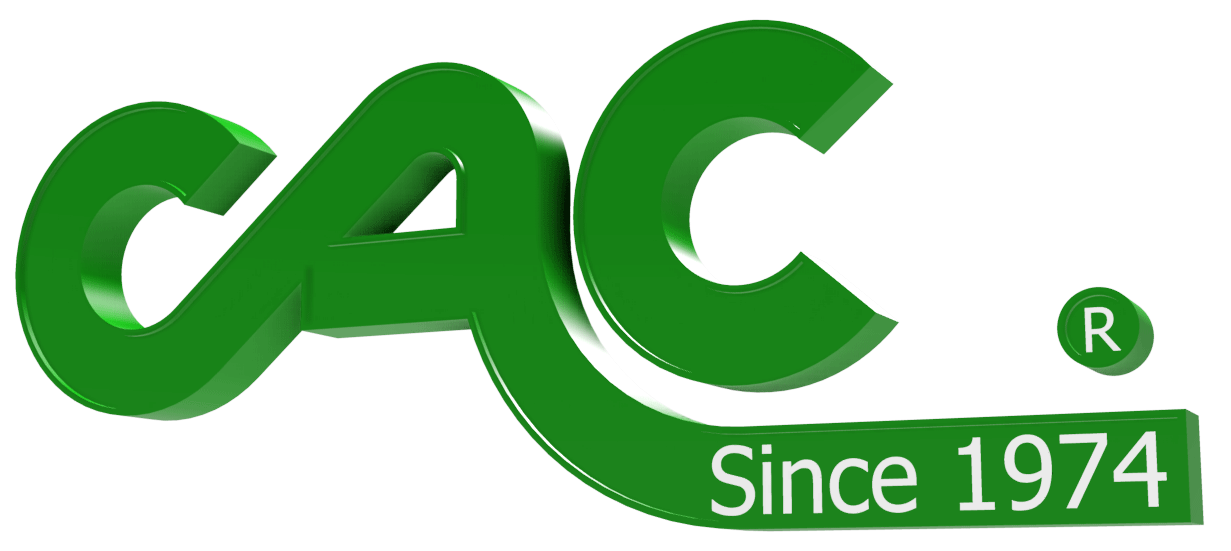Definition of the term Spreader Roll
For the purpose of this presentation, spreader rollers are defined as web transport rollers (driven or idle) that cause cross machine direction web movement, as the web is traveling in the machine direction. There are three purposes of cross machine movement; 1) this action will remove wrinkles, 2) this action can separate slit widths, to prevent interleaving, 3) web width can be stretched a predetermined amount.
This presentation will cover each type of Spreader Roll and how they can be utilized in the applications listed above.
Why do webs wrinkle?
To understand why webs wrinkle and why spreader rollers work, it is necessary to understand the most important web handling principal when it comes to wrinkling. This principal states:
A web will seek to align itself perpendicular to a roll, in its entry span to that roll.

The web must be in traction with the roll for this web handling principal to be true and effect the web behavior. In other words, if the material slips over the roll face then it can wander or remain in its current alignment with a roll not perpendicular to it.
The reason webs wrinkle can be summed up in one expression – lateral compressive forces. This presentation will seek to explain why lateral compressive forces occur, how to avoid them and spreader rollers that will remove wrinkles when these lateral compressive forces cannot be avoided.
Causes of Web Wrinkles
In a perfect world, webs would be flat, without gauge band variations. Roll stock would always be wound with the perfect tension from the core through the full roll diameter. Processes would always be run at the perfect tension for each material and operation. All converting processes would be run in humidity-controlled environment, where temperatures never vary. All rollers would be parallel from unwind to rewind and balanced perfectly. There would be no machine vibration. There would be no long, unsupported web lengths. You get the idea.
Unfortunately we do not live and work in a perfect world. One or a combination of any or all of the circumstances listed above will cause wrinkles.
Web characteristics that will cause wrinkles:
- Gauge band variations (thickness variations) across web width, cross machine direction (figure 1) will cause wrinkles because tensions will vary across the web width. These tension variations will cause tensile stress in the thicker areas and compression in thinner areas. This compression causes wrinkles.

- Tight side/loose side. This condition is caused by the web being longer (linearly), on one side than the other, in the machine direction. If you were to lay flat an extremely long length of material in this condition under no tension, it would actually arc instead of being straight. This condition again creates tensile stress on the tight (short) side and compression on the loose (long) side, causing wrinkles.

- Baggy center, tight edges. The web being longer in the center than the two edges, in the machine direction, causes this condition. If you were to lay material with this characteristic, flat, then you would see ripples or bubbles develop in the center while the edges were straight and flat. In a converting process, webs with this material characteristic will wrinkle because most of the tension that is typically evenly distributed across the full width is mostly distributed on the shorter (machine direction) edges than longer (machine direction) center. Tensile stress on the edges will create lateral compression in the center of the web, causing wrinkles.

- Baggy edges, tight center. The web being longer on the edges than the center, in the machine direction, causes this condition. If you were to lay material with this characteristic, flat, then you would see ripples or bubbles develop on the edges while the center was straight and flat. In a converting process, webs with this material characteristic will wrinkle because most of the tension that is typically evenly distributed across the full width is mostly distributed on the shorter (machine direction) center than longer (machine direction) edges. Tensile stress in the center will create lateral compression on the edges of the web, causing wrinkles.

- Poorly wound roll stock (parent roll) will cause wrinkles for the following reasons:
- Tension too high, especially at the outer layers of the roll can cause inner layers to buckle. This is evident by viewing the end of the roll and observing a starring effect. In extreme cases, the core may even be collapsed. This roll characteristic will cause the web to be wrinkled before it enters a converting process.
- Tension too low will cause the roll stock to be wound loose. Layers will slip on each other, making tension control ineffective or intermittent. This will cause the material to neck down (under tension) and expand (when tension is low or nonexistent). These compression and decompression forces will create web wrinkles.

Machine characteristics that will cause wrinkles:
- Idler roll buckling or deflection will cause wrinkles because the web will actually deflect out of its normal running plane at different intervals across the web width. This out of plane condition will occur wherever the greatest amount of deflection (usually the center) is in the idler roll. When roll deflection occurs, webs will wrinkle because they will compress toward the deflection point.

- Air entrainment in webs as they flow over rollers will cause wrinkles. Air entrainment will create slippage between the web and the roll face. If this slippage occurs, then the web is not in traction with the roll. For the web handling principal, that a web will seek to be perpendicular to a roll in the entry span to that roll, to effect web behavior, it must be in traction with the roll. If the web is not in traction with a roll, it can wander or stay aligned with that roll to which it is not perpendicular. Webs that wander will wrinkle because the web will move to be perpendicular to the next roll with which it has traction. This movement to remain perpendicular will cause a strain on the web. Air entrainment problems can be detected by viewing idler rollers that stop rotating during the converting process. Also, if wear spots are seen across idler roll faces, air entrainment is probably the problem. Machinists’ bluing dye can be applied to idler rollers where air entrainment is suspect to detect wear spots.

- Material roll buckling or deflection. If the parent roll deflects on its support mechanism (air shaft, mechanical chucks or core cones mounted on a simple steel through shaft) then compressive forces will cause the material roll to buckle and wrinkle before the web enters the converting process.

- Varying tension through several different types of processes in one converting line (figure 10) will cause wrinkles. A good example of this is tension through a coating section, printing process, drying section and slitting section. Tension through the coating section may be high, then through the printing process may be lower, then through the drying process lower yet, then through the slitting section may be high again. Wrinkles will occur under these conditions because the web will stretch and contract creating compressive and decompressive forces.

Lateral (cross machine direction) compressive forces are created in the web because of a high tension. Decompressive forces are created from the web trying to return to its natural state after leaving a high-tension section. These lateral compressive and decompressive forces are very similar to stretching and relaxing a rubber band. When you stretch a rubber band, its length grows and its width narrows (lateral compressive forces make the rubber band narrow). When the same rubber band is relaxed, the length shortens and the width grows as it tries to return to its natural state (lateral decompressive forces). These individual tension sections (zones) can be affected by braked, defective or unbalanced idler or driven rollers that will create tension variations as the web is flowing through the process.
A braked roller, defective roller or a defective bearing in an idler roller, will cause tension to vary on the downstream side of the idler roll. This will vary tension very similar to the situation described above. Again, as tensions vary, the web will stretch and contract creating wrinkles.
- Other web expansion and contraction effects on the web will create wrinkles. Examples of these effects are heat on plastics and moisture in paper.
- If idler rollers and/or driven rollers are not parallel to each other, wrinkles will occur. These occurrences are again introduced because of the web handling principal, that a web will seek to align itself perpendicular to a roll in the entry span to that roll. As the web is seeking this right angle it will move or bend out of its normal running plane. This will create tension to variations across the web, tensile stress in high tension area and lateral compression in the low tension area.

Why use spreader rollers?
To remove wrinkles. As described in the previous section, webs will wrinkle for a lot of reasons. Some times, wrinkles can be avoided by correcting certain errors in converting processes. Many times, wrinkles will reoccur even though it seems all conditions are perfect in the converting process. These reoccurring wrinkles can only be removed with a spreader roll.

Spreader rollers used to remove wrinkles will do so prior to the wrinkle becoming a crease. If a wrinkle becomes a crease it becomes very difficult or usually impossible to remove. A wrinkle will become a crease when it enters a station where the web is being nipped or rewound.
Typically, spreader rollers are used as a “bandage” for wrinkling problems. Spreader rollers do not permanently change the characteristics of material. Multiple spreader rollers may be required for one converting process, each roll located just prior to each converting operation where wrinkles cause a problem or may become creases.
Applications where accumulated wrinkles require more cross machine movement than one spreader roll can provide will require multiple spreader rollers. Usually, multiple spreader roll applications will incorporate several of the same type of spreader rollers, each immediately following the other, again just prior to each operation where wrinkle removal is required. Different types of spreaders should not be used in close proximity to each other, because each type utilizes different principals of web spreading. Many times, when different types of spreaders are used together, results can become unstable and unpredictable. Some times, different types of spreaders will counter act each other and cause wrinkles, this usually does more harm than good.
Imagine the print quality out of a printing station or edge quality out of a slitting station with an in-running wrinkle or crease. Spreader rollers are used to improve product quality and reduce waste by removing some, most or all of the wrinkles just prior to a converting operation. Bottom line – spreader rollers used to remove wrinkles will increase profits by reducing or eliminating defective product. With the use of spreader rollers, web speeds can often increase and webs that could not be run without wrinkling (example-very thin or soft webs) in the past can now be processed with little or no problems.
To separate slit widths, to prevent interleaving. When a web is slit into several separate widths, each width takes on the properties of a separate web. Each width will have its own tension and each width will have a tendency to wander, similar to how the parent web can wander (this is why the parent web is usually edge guided).

Normally, several slit widths are wound on a duplex (two station winder). This type of rewind has two separate rewind shafts, each with its own drive. Use of a duplex rewind will prevent interleaving by placing each slit width alternately, on the two separate rewind shafts. Example – The first slit width is placed and rewound on to shaft A, the second slit width is placed and rewound on shaft B, the third slit width is placed and rewound on shaft A, etc. Because each slit width is placed with the space of the next slit width between each rewound roll it is impossible for interleaving to occur.
However, in applications where several slit widths are wound on to a single rewind shaft, edge interleaving will occur with even the slightest wander by each slit width. When this interleaving occurs with several layers of web wraps on the rewind shaft, the edges of each slit roll will become overlapped. It is very difficult or impossible to separate each rewound roll if the edges are overlapped.
Bowed (curved axis) spreader rollers will prevent edge interleaving and roll overlap on a single rewind shaft by evenly separating each slit width. The separation must be greater than the maximum cumulative web wander for each slit width. This separation principal works, based on the web handling principal that the centerline of each slit width (now having the properties of a separate web) will seek to be perpendicular to the intersection point on the arc (curved axis) of the bowed roll.

To stretch the web across the width. Some applications require that a web be stretched in the cross machine direction. A good example of this is a tenter frame application, often used for textiles. While a tenter frame is not a spreader roll by definition it does stretch material in the cross machine direction. Spreader rollers are used quite often immediately following a tenter frame to keep the web taught, so it doesn’t return to it’s natural width state. Spreader rollers may be used in this application to increase stretch in the cross machine direction.

All spreader rollers have the ability (with varying aggressiveness) to stretch a web. Each uses it’s inherent spreading principal to do so which we describe further in the document (see Principals of Operation for each type of spreader).
 (800) 433-2413
(800) 433-2413

 Please wait
Please wait




